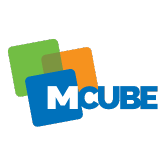invidis Yearbook 2025
News & Events
The evolution of digital signage: a new era of leadership
In today’s fast-moving digital landscape, digital signage market leaders are not simply defined by size. Instead, they are recognised for how they adapt, scale, and deliver consistent value. Across Europe, digital signage has evolved into a critical element in brand communication, customer experience, and operational efficiency.
To track this evolution, the invidis Digital Signage Yearbook 2025 offers a comprehensive view of the market. It identifies the companies leading across regions and explores the trends that shape the industry. But it goes further—examining how business models, technology, and expectations are changing in parallel.
This year’s report highlights the growing relevance of managed services and the role of artificial intelligence. At the same time, it reflects broader market shifts, including the need for regulatory compliance, sustainability, and scalable service structures. Together, these factors are reshaping how leadership is defined and sustained.
What defines today’s digital signage industry leaders
Historically, leadership in digital signage was linked to hardware volume and technical reach. That model is changing. Today, the ability to manage services across geographies—and across the full lifecycle of a network—is a defining factor. As signage becomes more embedded in business operations, service continuity matters more than system delivery.
The 2025 Yearbook explores this shift in depth. Managed signage now plays a central role. Providers are moving from installation-focused models to operational partnerships. These include 24/7 network monitoring, remote updates, proactive diagnostics, and continuous optimisation.
Artificial intelligence adds another layer. It enables content automation, predictive maintenance, and data-driven decisions. Leaders in the sector are already using AI to enhance efficiency and improve targeting, particularly in retail and public environments.
Regulation also plays a growing role. Many enterprise clients now require ISO-certified providers and GDPR-compliant platforms. Sustainability, too, is no longer optional. Networks are expected to meet performance standards while reducing energy use and environmental impact.
Leading providers shaping the European digital signage market
Despite ongoing transformation, the group of digital signage market leaders in Europe remains relatively stable. A small number of providers—such as Trison, ZetaDisplay, and M-Cube—have maintained strong positions through a mix of scale, reliability, and service development.
What distinguishes these players is not just footprint, but the ability to support clients across multiple markets. This includes navigating regulatory frameworks, integrating into complex infrastructures, and delivering both technical and creative value.
While their approaches differ, they share common traits: operational consistency, cross-regional reach, and a focus on delivering ongoing results. These factors are becoming more important than technology alone, especially as digital signage becomes a core component of customer engagement and brand visibility.
M-Cube’s consistent role among digital signage market leaders
Within this framework, M-Cube maintains a consistent role. The invidis Market Map 2025 highlights its strong position in Italy, where it continues to lead. It also reflects the company’s progress in the UK and France, two highly competitive markets. Beyond that, M-Cube is expanding across DACH and Benelux, gradually building capacity and relevance.
What sets M-Cube apart is not necessarily rapid expansion or aggressive positioning. Instead, it focuses on integration. The company combines content, software, and service layers to support long-term project delivery. This orchestration allows for seamless deployment and effective day-to-day management.
Its structure supports both enterprise-scale rollouts and locally tailored networks. Clients benefit from flexible CMS integration, content scheduling, and remote support—all embedded into broader IT systems. This approach reduces complexity while maintaining agility.
In doing so, M-Cube aligns with a broader shift among leading providers: from being technical suppliers to becoming strategic service partners. It is this ability to operate reliably, adapt thoughtfully, and deliver consistently that secures its place among the region’s most recognised names.
A sector in transition—and what comes next
Looking ahead, the digital signage industry will continue to move towards integrated, service-led models. Success will depend on more than product innovation. It will require operational strength, strategic alignment, and the capacity to evolve with customer needs.
The 2025 Yearbook makes this clear. Providers who can combine software, content, support, and system intelligence—across diverse markets—are the ones shaping the future. As organisations invest in connected experiences, they seek partners who offer more than technology. They look for trust, flexibility, and long-term value.
This is the space where the true digital signage market leaders operate. Not only because of what they offer today, but because of how they position themselves for what’s coming next.

